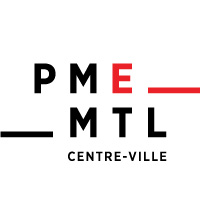Growing lettuce vertically in a warehouse using automated operations. This is the challenge met daily by Aquaverti, the only vertical monoculture farm in the country.
Who would have thought that Fordism would one day be used for agricultural production! This is exactly the case at Aquaverti, whose methods take inspiration from both the automotive industry and Dutch and Japanese agriculture.
This company specializing in the monoculture of leaf lettuce is actively contributing to the growth of Québec and Canada's food autonomy. Its urban farm facilities in the Borough of St-Laurent were designed to be more factory than farm: the optimization of cubic space, robotization, the production line principle and environmental control are all central to this concept.
Robotic Farming
At Aquaverti, lettuce grows on 16-foot tall vertical structures similar to the shelves found in large surface hardware stores. The disadvantage of this arrangement is that it is difficult for an average human to see lettuce more than six feet high. However, no one wants to put workers through the difficulty of climbing up the structure several times a day to check on the growth and condition of the produce. Not to mention the time wasted performing such tasks.
Our approach eliminates pesticides and greenhouse gases and reduces water consumption by 95%.
Aquaverti designed an automated system with robots. The first robot’s mission is to deposit lettuce plants in the growth towers and then ensure that the ideal conditions for its cultivation are maintained. Then, a second robot harvests the mature lettuce and organizes its packaging for shipment. With the constant aim of making intelligent use of space and compensating for a small floor area, these robots are placed directly on conveyors.

In addition, while traditional hydroponic basins are 4 x 8 feet long, Aquaverti's basins are 4 x 65 feet long. Inspired by Dutch agriculture, they resemble long, narrow swimming pools in which fertilizing solutions are added to make the lettuce grow. Here too, automation plays a role. When a series is ready to be harvested, the robot transports the rafts with the lettuce to the harvesting area, then new plants are installed in the empty spaces.
Saving Time, Preserving Quality
Originating mainly from California and Mexico, the lettuce we currently consume in Québec is grown either in conventional greenhouses heated by fuel, or in fields requiring the use of diesel tractors and pesticides, leading to serious pollution.
“In addition to eliminating pesticides and greenhouse gases and reducing water consumption by 95%, our approach speeds up production, taking only 35 days to complete all the steps,” said George Aczam, President and Founder of Aquaverti. Ultimately, the organization plans to produce 1,600 to 2,000 heads of lettuce per day, 365 days a year.
In terms of nutritional value, this lettuce beats the varieties grown in California, Arizona and, to a lesser extent, Florida, which make up the majority of imports here. While the latter only become available to consumers about ten days after their harvest, Aquaverti's can be available in about twelve hours.
“It is imperative to minimize delivery time to food markets,” said George Aczam. “This is because leaf lettuce is one of the most fragile in its category. Its leaves break easily during handling and transport, and it begins to lose nutritional value very quickly.”
A Strategic Choice
Both logistical and economic reasons prompted Aquaverti to choose leaf lettuce over any other vegetable. First, Canada is the world’s largest importer of leaf lettuce, and 90% of Canadians consume it every day, either directly or in a sandwich or as a decoration for another dish. In addition, leaf lettuce takes up little space in height, unlike kale, for example.
It also has the advantage of requiring only one light spectrum, unlike other vegetables that grow more slowly. “For other vegetables, the indoor spectrum would have to be constantly adjusted in order to reproduce outdoor brightness and sunlight conditions.” Being able to control the light spectrum also makes it possible to influence certain components of lettuce in production, such as leaf thickness, firmness and taste, in an entirely natural, GMO-free way.
Full Range of Support
George Aczam is very appreciative of the support received from PME MTL, which covers both the financial and organizational aspects. “The team provided us with valuable funding advice,” he says. “They also helped us establish contacts and build relationships with various partners and investors. In fact, we received a full range of support: operational, management, accounting, and more.” With this support, the entrepreneur and his team were free to focus more fully on the innovation aspect of their business.
During this conversation, Mr. Aczam also remarked that he finds Montréal to be a very stimulating place. “This city is filled with bright young people who have multidisciplinary talents. Just think of everything that people are doing here in relation to the issue of sustainability. The entrepreneurial vision is widespread and contagious.” He also believes that entrepreneurship is within everyone's reach. “It's all about a state of mind,” he says. “You can hold a pen and use it. You can also put yourself in the inventor's state of mind, then ask yourself what you can create.”
Aquaverti is supported by PME MTL Centre-Ouest.
